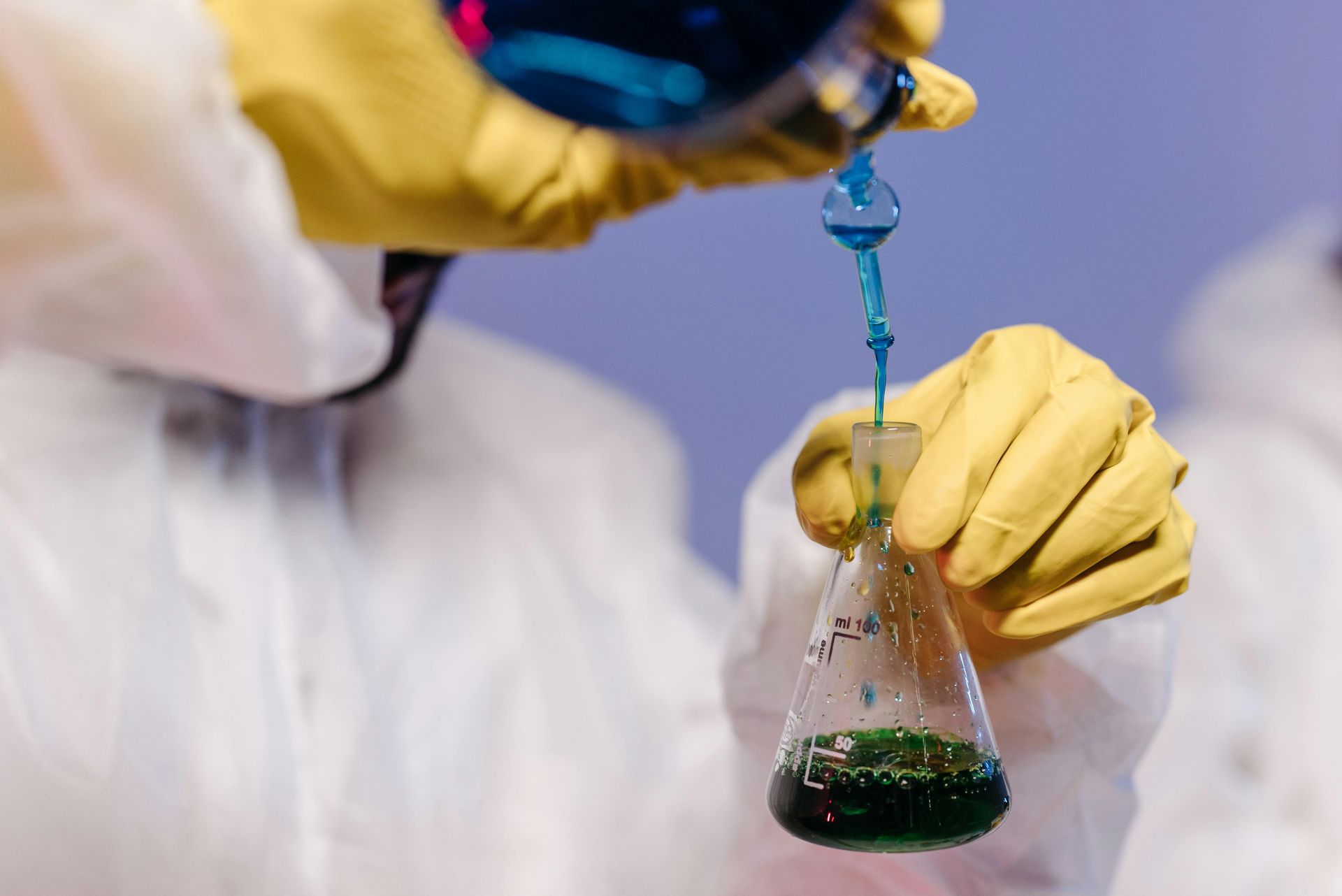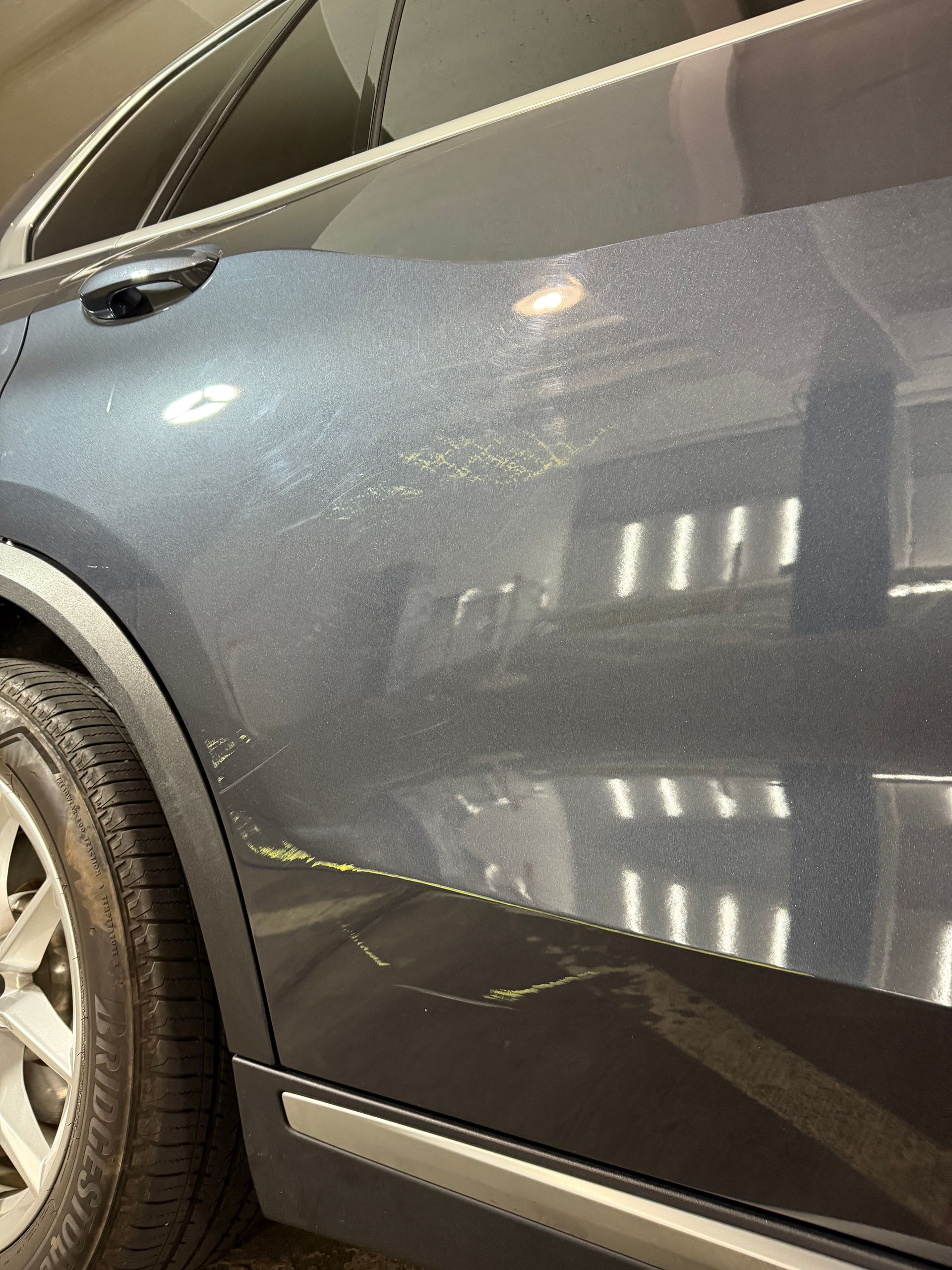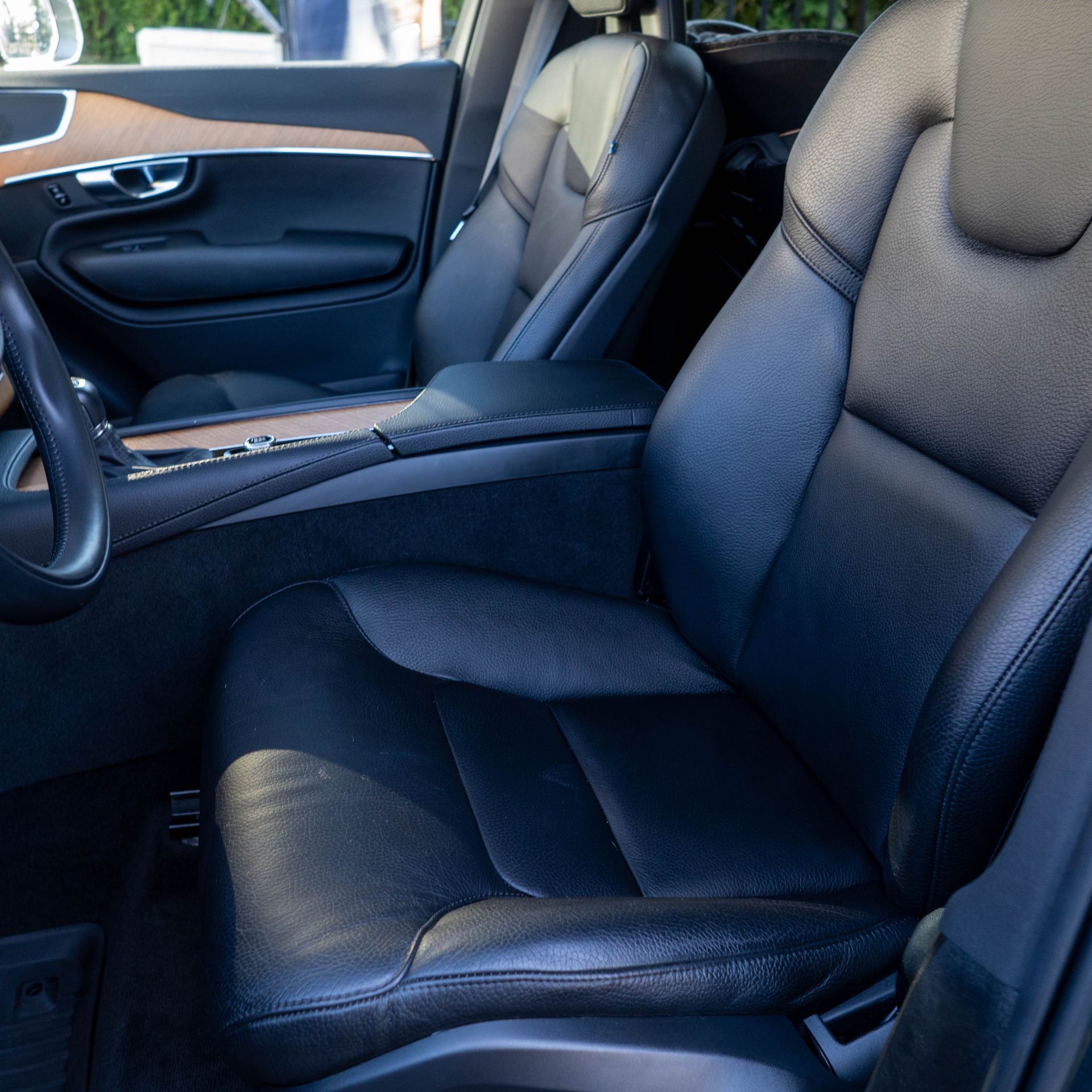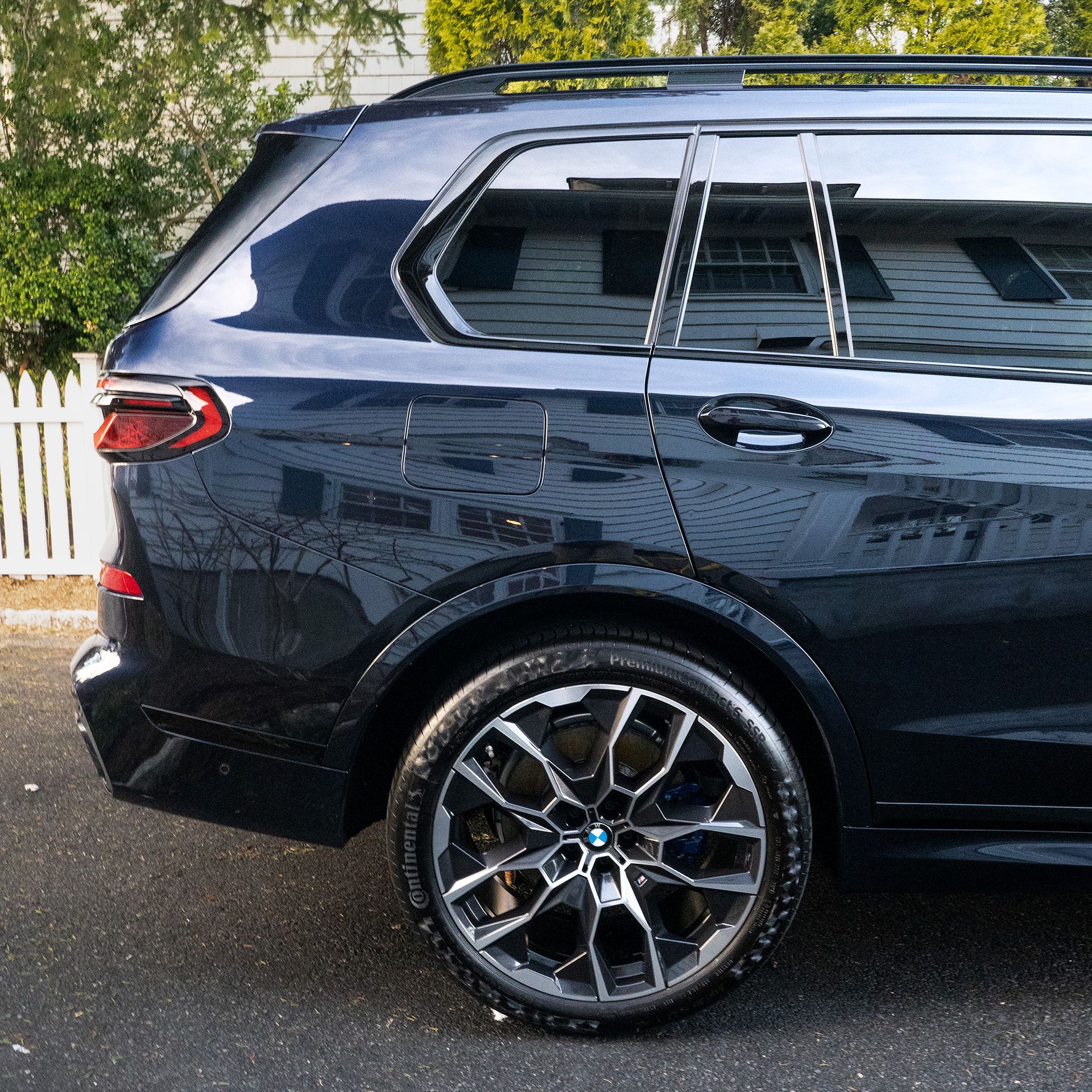How Long Ceramic Coating Lasts and Tips for Extending Its Lifespan
August 18, 2023

What is ceramic coating and what are the benefits of it?
Ceramic coating is a popular, modern option for car owners who are looking to protect their paintwork from harsh environmental elements and everyday wear. Unlike other forms of vehicle paint protection, ceramic coating is a liquid polymer that chemically bonds with a vehicle's paintwork, creating a layer of protection that is more durable than traditional waxes or sealants.
The coating is able to provide long-lasting barrier against bird droppings, acid rain, salt, snow and road grime. This in turn prevents damage to the paint job underneath. This protective layer helps to minimize the the probability of introducing of minor scratches and water spots by creating a harder surface on the vehicle. The glossy surface also creates less friction making the surface less susceptible to new scratches when proper maintenance techniques are used.
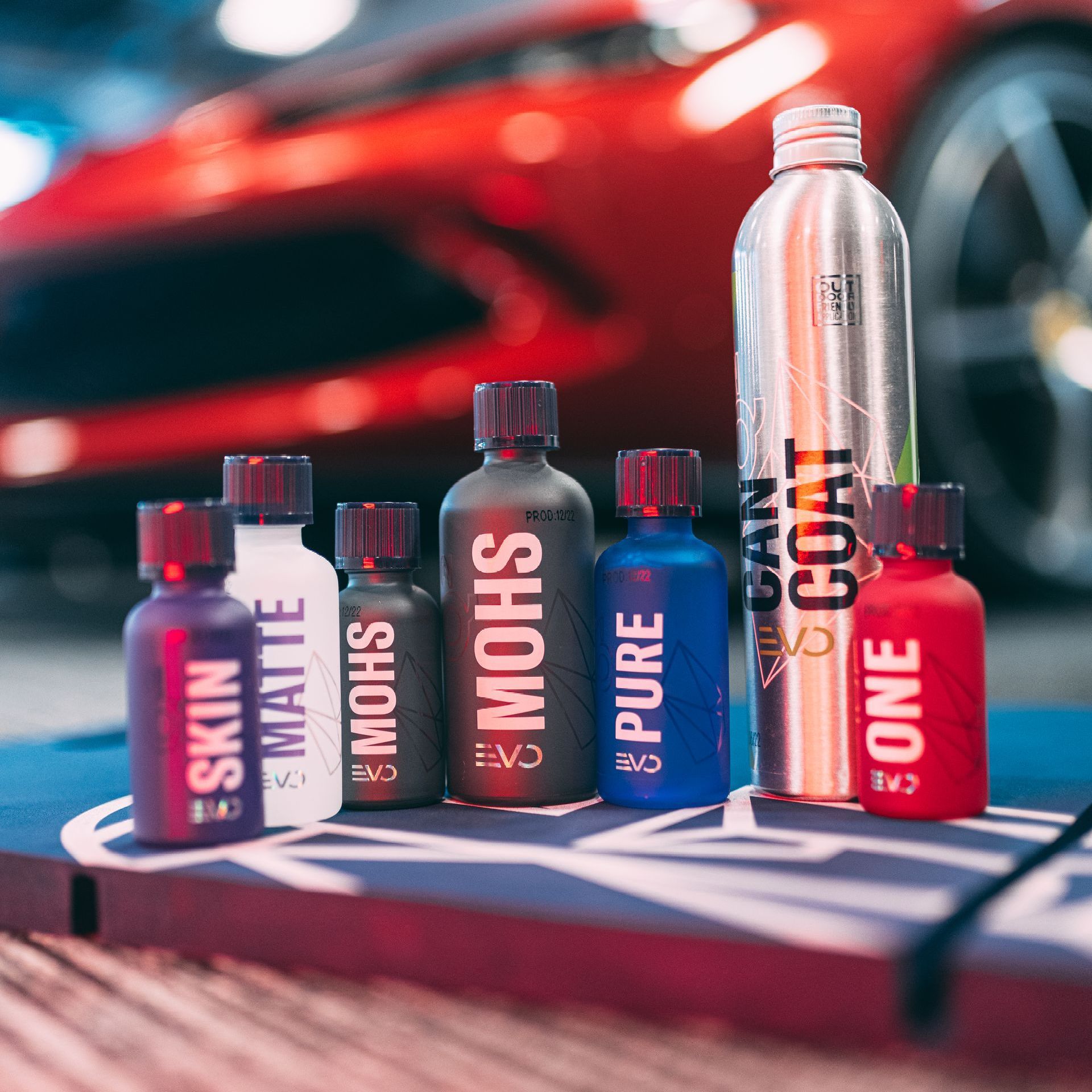
How do ceramic coatings compare to waxes or sealants?
Old school waxes and synthetic sealants have a shorter effective lifespan compared to a professional, high solids ceramic coating. Waxes need to be reapplied every few months and sealants last up to a year, while ceramic coatings can last for several years with proper care and maintenance. This makes ceramic coating the most cost effective option of the three, since it reduces the need for frequent reapplication.
Aside from its durable longevity, ceramic coating also offers minimal maintenance requirements. Because ceramic coatings are extremely hydrophobic, they create a slick surface that repels water, along with dirt, dust and other forms of contamination. This means that regular maintenance like a regular maintenance wash can become as easier, less time consuming task. Water beading is a admirable feature that advertised about ceramic coatings because water quickly rolls of the surface of the coating, taking dirt and debris along with it.
Why is regular maintenance important for my ceramic coating?
Sticking to the proper maintenance techniques is important if you want your ceramic coating to last for its entire lifespan. Most manufacturers have special care instructions for their coatings. Washing your vehicle every two weeks to one month allows the coating to be cleaned of common contamination like road film and dirt restoring the protective surface of the coating, restoring the hydrophobic so that they can perform as intended.
Washing on a schedule also prevents the build up of tar and iron inside of the paintwork and on the coating. These contaminants require a more involved decontamination process. If you notice that your coating starts to clog and seems to have water and contamination stick to certain areas, this could be because of sheeting caused by surface contamination. While some coatings (like our Gyeon coatings) still provide protection while sheeting, or clogged, they lose their self-cleaning properties if maintenance is missed. This overall takes away from the aesthetic appeal of the ceramic coating.
It's also important to note that even though ceramic coatings are chemical resistant, they can still get damaged by neglect and lack of care. Bird droppings, pollen, tree sap and brake dust are all acidic, which can break down the surface of the coating and even lead to permanent damage if left too long. Fortunately, the coating is taking the impact instead of the paintwork, meaning that the coating can be polished off and reapplied. This should be a last resort, since preventative maintenance is the more cost effective option, compared to reapplying a ceramic coating.
Why should I care about damage to the coating if I can just reapply it?
To expand on our last point, redoing the process of paint correction and ceramic coating is more costly, especially when a coating is still intact. Paint correction is a process that takes hours to days. A ceramic coating is harder than the surface of the original paintwork and can be harder to remove than clear coat on the surface.
How long does a ceramic coating last on a vehicle?
Ceramic coatings outperform traditional waxes and sealants by years. A high quality ceramic coating applied to a properly prepared surface can last anywhere from 3 to 10 years. Some companies offer a lifetime coating, which offers the benefits of the coating for the lifetime of the coating, which can be maintained to last for several years. Note that lifetime refers to the coating and not the length of the car's life.
With many ceramic coatings on the market, it's important to pick a manufacturer you can trust. It's easy to make claims about a product, so pick a detailer who knows their products and how to troubleshoot issues.
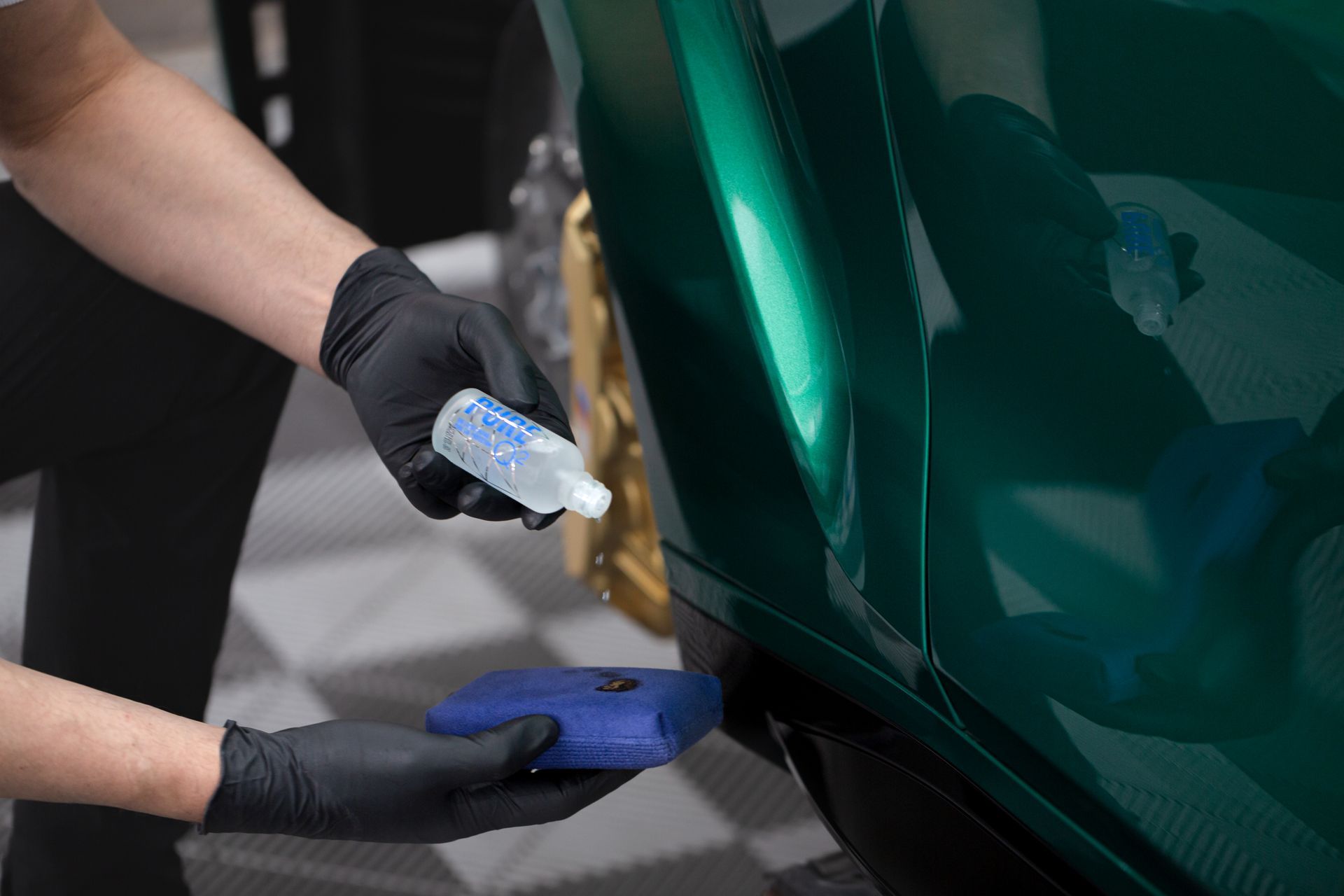
What other factors are there that can impact the longevity of my ceramic coating? How can I maintain my coating for maximum longevity?
The biggest factor that can impact the longevity of a ceramic coating is the environment where the car is driven and parked. This might not be obvious at first but if a vehicle is parked outdoors, it will be exposed to much more heat, sun, precipitation and environmental pollution than if parked in a carport or under a garage. Where the car is driven can also affect the lifetime of the coating as cars that are driven in rougher conditions and more frequently go through more stress. A high quality ceramic coating can hold up to a variety of factors and your choice in an installer and product can be the difference between premature failure or a long lasting coating.
Maintenance and coating care are equally as important and should be followed to the manufacturer's specifications. While each manufacturer has products that are compatible with their specific coating, here are some general instructions to washing your ceramic coated vehicle:
- Pre-rinse the ceramic coated vehicle to remove any loose dirt of debris.
- Pre-soak the surface with a foam soap that is pH neutral.
- Using a soapy wash mitt or microfiber cloth, gently remove contamination off the surface in a straight line motion left to right with very gentle pressure. Clean the mitt or cloth intermittently to avoid spreading dirt on the surface of the coating.
- Rinse the soap of the vehicle and dry using a blower or drying cloth to avoid water spotting.
- Use a silica based ceramic sealant on the surface of the vehicle to restore and boost the hydrophobic properties of the coating.
Other tips to extend your coating's lifespan
While ceramic coatings offer exceptional protection and longevity, there are several practices you can follow to further extend the lifespan of your ceramic coating to ensure its effectiveness over time. Here are some valuable tips to help you get the most out of your ceramic-coated vehicle:
Choose High-Quality Products: The quality of the ceramic coating product you choose can significantly impact its durability and performance. Opt for reputable detailing brands that offer advanced formulations and proven results. Investing in a high-quality ceramic coating will provide you with better protection and longer-lasting benefits.
Make Sure to Prepare the Paint Surface Before Application: Proper surface preparation is crucial for the bonding and effectiveness of the ceramic coating. Thoroughly wash and decontaminate the paint surface to remove dirt, grease, and other environmental contaminants. Using a clay bar treatment will achieve a smooth and clean surface for optimal adhesion.
Follow Instructions and Use Appropriate Tools for Application: When applying the ceramic coating, follow the manufacturer's instructions very carefully. Use the recommended tools and techniques for application, such as applicator pads or microfiber cloths. Applying thin and even layers ensures proper bonding and consistent coverage.
Take Time to Clean Your Vehicle Regularly: Regular maintenance is key to preserving the integrity of the ceramic coating. Wash your coated vehicle regularly using a pH-neutral shampoo and soft microfiber cloths or sponges. This prevents dirt, dust, and contaminants from building up on the coating's surface.
Consider Adding an Additional Layer for Increased Protection: Some ceramic coating products offer the option to apply multiple layers for added protection. Adding an extra layer can enhance the coating's durability and resistance to environmental factors. Follow the manufacturer's guidelines for layering to avoid overapplication.
Protect Your Vehicle from Harsh Environmental Factors: Harsh weather conditions, direct sunlight, and exposure to pollutants can affect the coating's longevity. Whenever possible, park your vehicle in covered areas to shield it from extreme temperatures, UV rays, and environmental contaminants.
Address Stains and Contaminants Promptly: Bird droppings, tree sap, and other contaminants can be acidic and potentially damage the ceramic coating if left untreated. Clean your vehicle promptly if you notice any stains or contaminants on the surface to prevent them from eating through the protective layer.
Avoid Harsh Chemicals and Abrasive Cleaning Methods: Use gentle cleaning products and techniques to wash your coated vehicle. Harsh chemicals and abrasive cleaners can degrade the coating and compromise its protective qualities. Opt for pH-neutral shampoos and soft cleaning tools.
Schedule Regular Inspections: Periodically inspect your ceramic-coated vehicle for signs of wear, damage, or areas where the coating may have diminished effectiveness. Address any issues promptly by applying touch-ups or seeking professional assistance.
Professional Maintenance and Touch-Ups: To ensure the optimal performance of your ceramic coating, consider professional maintenance and touch-up services. Experienced technicians can assess the condition of the coating and provide necessary touch-ups to maintain its effectiveness.
By following these tips, you can extend the lifespan of your ceramic coating and enjoy the benefits of enhanced protection with a standout, well-maintained vehicle. With proper care, your ceramic coated car will continue to turn heads and maintain its impeccable appearance for years to come.
